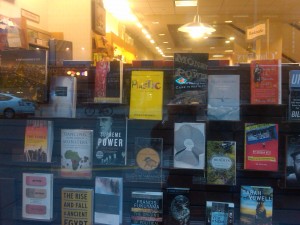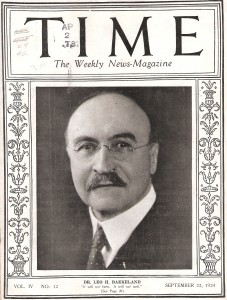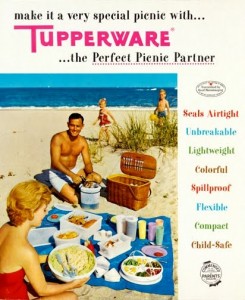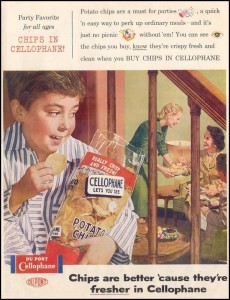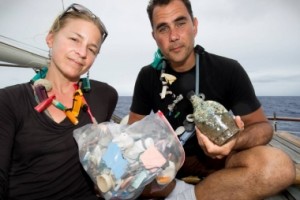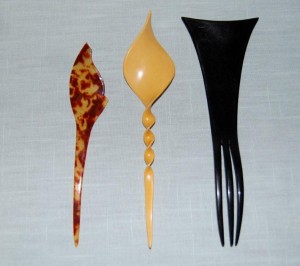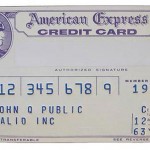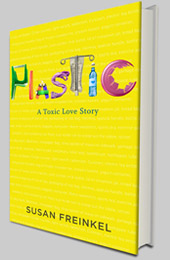In Plastic: A Toxic Love Story, I describe how I planned to spend a day not touching any plastic, only to be foiled first thing that morning by my plastic toilet seat. So I spent the day making a list of all the plastic things I touched. By that night, I had a tally of nearly 200 items – and a new way of thinking about coping with our era’s explosion of throwaway goods.
For one thing, it opened my eyes to how thoroughly plastic pervaded my life – from the “brass” doorknob on my front door to the tiny stickers on my organic fruit, and even in the gum I chew which contains the plastic polyvinyl acetate! If I divided the total number of items on my list by the fifteen waking hours in my day, I was touching plastic roughly every five minutes – actually even more often than that, since I only tallied new plastic things my fingers encountered. The list made me see the ubiquity of plastic – and how its presence virtually everywhere has made it all but invisible.
Looking more closely at the list, I recognized plastic things that were indispensable — my computer, my phone, my refrigerator; and minor conveniences I could easily do without – grocery bags, seltzer bottles, a picnic fork. There were also less essential items I might need to worry about, like that water bottle I packed in my daughter’s lunch, which reportedly contained a chemical that mimics estrogen.
Breaking the list down further, I was surprised to find that the biggest category of entries consisted of packaging and throwaway items, accounting for 72 of the 196 things I’d jotted down. As I later learned, packaging consumes about a third of all the plastic produced. Add in all the other kinds of disposable things made of plastic, such as plastic syringes or lighters, and you find that that single-use products –whether important or trivial — account for half of the nearly 600 billion pounds of plastic produced annually.
That’s a lot of plastic we’re throwing away – or worse, allowing to foul land and sea with ever-lasting litter. It’s especially perverse when you consider the effort, money and environmental impact incurred to extract the fossil fuels used to make plastics, which we then bury in landfills or burn up in incinerators.
But we can change our ways. It starts with seeing there’s a problem.
This Earth Day, trying doing your own plastic count. Spend the day tallying the plastic in your life and then take a good look at the list. What plastic things do you need? What could you live without?
Don’t expect that you can eliminate plastic from your life. That’s not practical – or even desirable, given the many benefit plastics have to offer, from life- saving medical equipment to fuel-efficient cars and planes. But all of us –from industry to individuals—can and must use plastic more wisely. We need to make sure the plastic we use really counts.
Here are some ways you can make plastic count:
1. Refuse single-use freebies: Bring your own bag when shopping. Carry a travel mug for your daily caffeine fix. Tell your waiter you don’t need a straw.
2. Instead of buying bottled water, stay hydrated from reusable bottles made of metal or BPA-free plastic.
3. Reuse where possible: Give that sandwich baggie a week’s workout; use that empty yogurt tub for leftovers.
4. Use your purchasing power to support companies that are trying to use less packaging and healthier kinds of plastic.
5. Recycle as much as you can. Find out what plastics your community recycler accepts and explore other avenues to take care of the rest. UPS stores will take back shipping peanuts; many grocery chains will take used bags and plastic film; many office supply chains will take back used printer cartridges.


